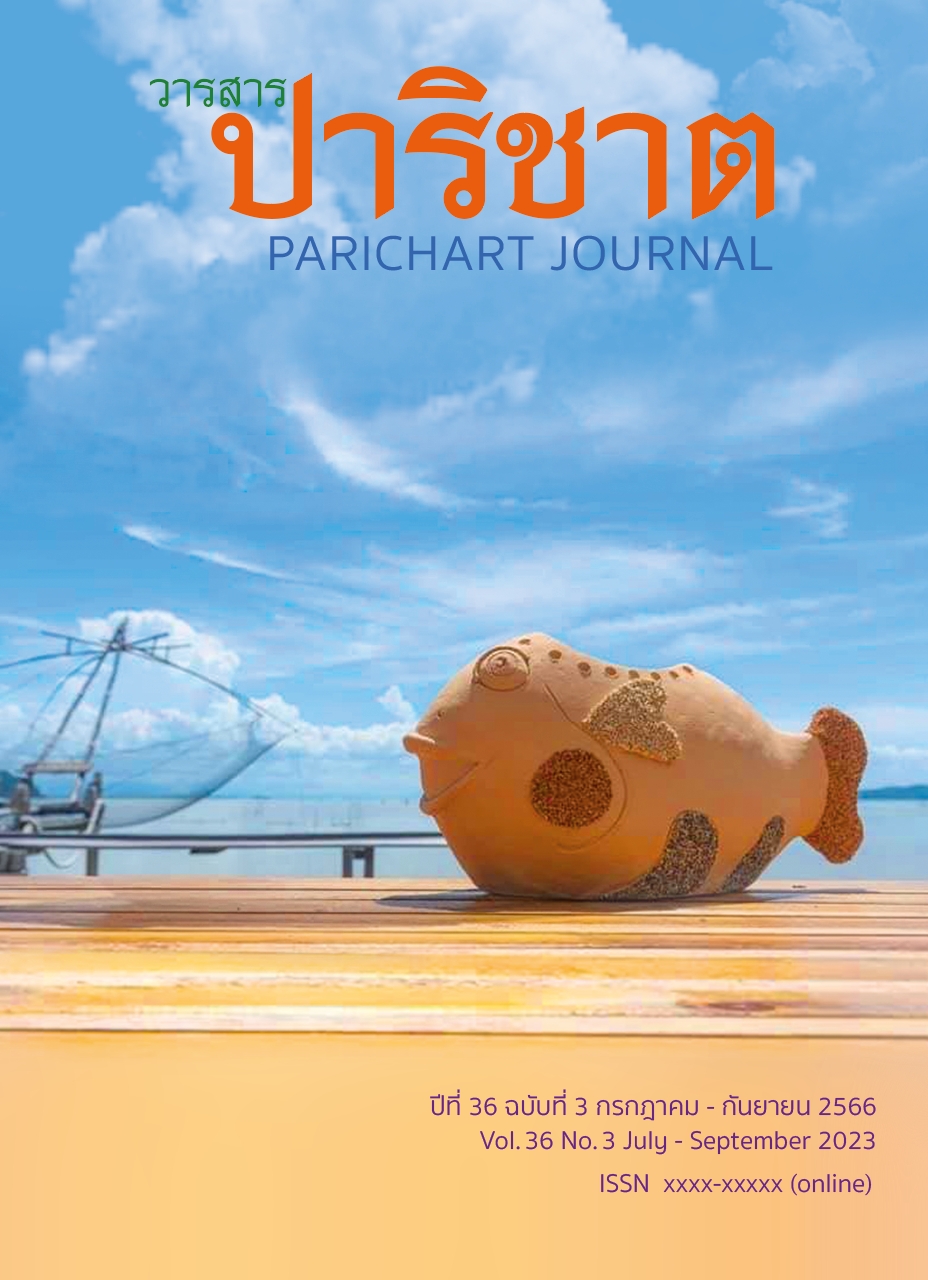Public Organizational Cultures Adaptation Model to Thailand 4.0 Era: A Case Study of Public Organizations under Central Administration
Main Article Content
Abstract
This research studied and established a Public Organizational Cultures Adaptation Model to Thailand 4.0 era. This research employed 2 types of qualitative research one of which was semi-structured interviews comprising with 14 key informants from 14 organizations and the other one was focus group discussion attended by 7 informants from 7 organizations. The results revealed that the “Public Organizational Cultures Adaptation Model to Thailand 4.0 era” was a system consisting of 6
stages, that were (1) selection of cultural elements suited for Thailand 4.0 era corresponding to organization’s mission, (2) embedding selected cultural elements into systematic processes, (3) analyzing culture-influenced results, (4) comparing with appropriate public sector quality management criteria, (5) corrective actions (learning, creativities and innovation) and (6) reaching to “Satisfied public organization according to Thailand 4.0 strategy”.
Article Details

This work is licensed under a Creative Commons Attribution-NonCommercial-NoDerivatives 4.0 International License.
References
Office of the Public Sector Development Commission. (2018). Thailand 4.0 - Bureaucracy 4.0. https://www.opdc.go.th.
Thailand 4.0-The model for driving Thailand to be stable, prosperous and sustainable. (2016). http://www.dla.go.th/servlet/EbookServlet?_mode=read&ebookColum=5918#
Schein, E. H. (2017). Organizational culture and leadership. (5th edition). John Wiley & Sons.
Suebvises, P. (2018). Organization theory. Rattanatrai Publisher.
Lewin, K. (1951). Field theory in social sciences. Selected theoretical papers. Tavistock.
Kotter, J. P. (2007). Leading change, Why transformation effects fail. Harvard Business Review. January 2007.
Robbins, S. P., & Judge, T. A. (2016). Essentials of organizational behavior. (13th edition). Pearson Education Limited.
Bratton, J. (2015). Introduction to work and organizational behaviour. (3rd edition). Palgrave.
Boonmatat, S. (2019). Organizational culture suited for the Thailand 4.0 era: Cultural elements fostering the improvement of organizational performance. Journal of Economics and Management Strategy, 6(2), 159-175.
National Institute of Standards and Technology (NIST). (2017). Baldrige Excellence Framework: A systems approach to improving your organization’s performance, 2017-2018. United States Department of Commerce.
European Foundation for Quality Management (EFQM). (2013). EFQM Excellence Model. EFQM.
Polit, D. F., & Beck, C. T. (2006). The content validity index: Are you sure you know what’s being reported? Critique and recommendations. Research in Nursing & Health. 29, 489-497.
Chandarasorn, V. (2019). National strategy and implementation. Presented to the conference of Royal Institute members. Office of the Royal Society.
State Enterprise Policy Office. (2019). State enterprise assessment model. http://www.sepo.go.th/tinymce/plugins/filemanager/thumbs/se-ammanualbook2562_3 final_2.pdf.
Office of the Thailand Quality Award, Thailand Productivity Institute. (2019). TQA criteria for performance excellence framework 2563-2564. East Printing House Co., Ltd.
Kane, G. C., Phillips A. N., Copulsky, J. R., & Andrus G. R. (2019). The technology fallacy: How people are the real key to digital transformation. The MIT Press.
Campbell, D., Edgar, D., & Stonehouse G. (2011). Business strategy: An introduction. (Third Edition). Palgrave Macmillan.


